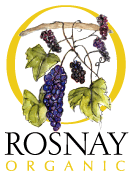The 3.75ha block was planted 1997 with the rootlings of clone IV11, which had been planted successfully in the region already and produced excellent wines. The soil is a north-west facing slope of sandy loam on red clay and decomposed granite on the upper slopes, with some deeper topsoil and mottled heavy clay on the lower slopes. The lower slopes are susceptible to late frost, which caused loss of yield and tight canopy structure in the 2003 vintage.Chardonnay is the most famous of the Cowra region wines, and was planted by both corporate wineries, investment schemes and private estates since the early 1980’s. “Cowra Chardonnay” was the driver of development of the region in the boom of the late 1990’s.However, Chardonnay is also a difficult variety to grow organically. Without the systemic fungicides (fungicides which are translocated throughout the plant’s vascular system, including roots) the variety is susceptible to attack from its arch enemy – Powdery Mildew – which affects both yield and quality. The only reliable organic control is sulfur, applied to the foliage during the early growth stages. This naturally occurring element is an allowed input for organic farmers. It does not kill the fungus, nor penetrate the vines vascular system, but it does prevent the mildew from spreading for the 10 day period during which the sulfur volatilises into the atmosphere.
